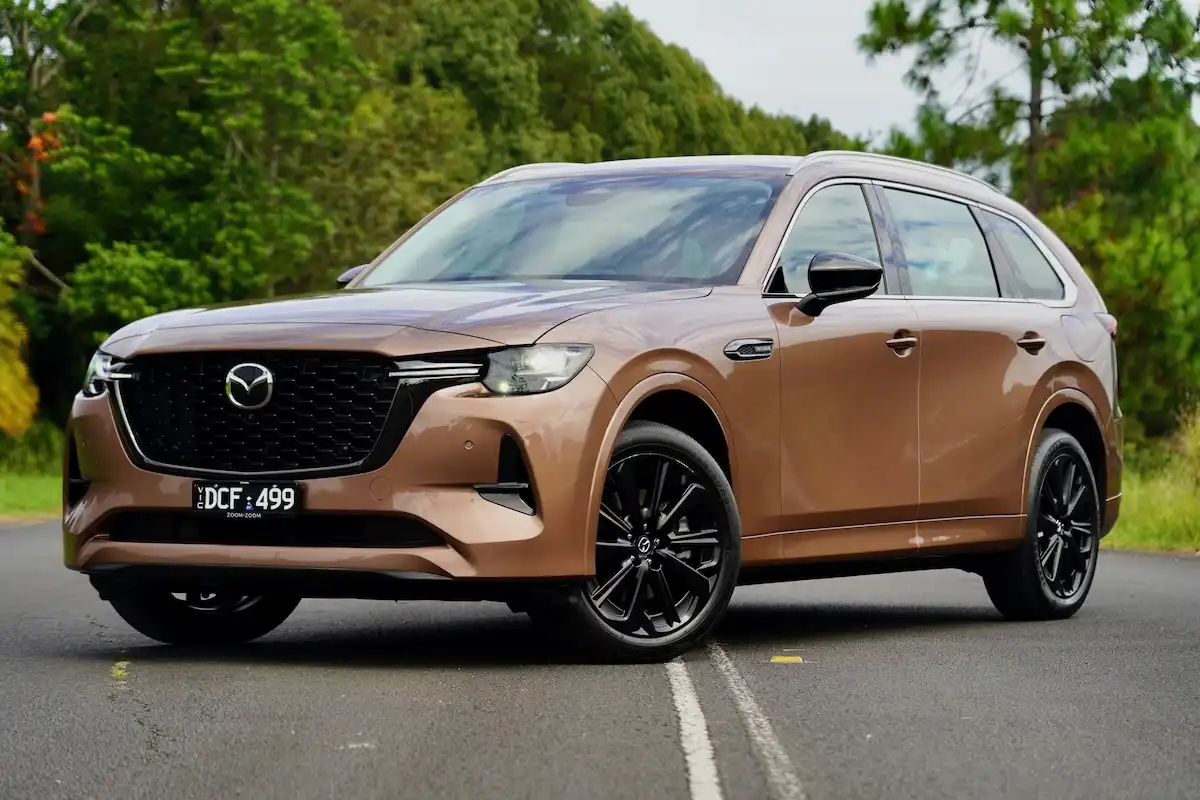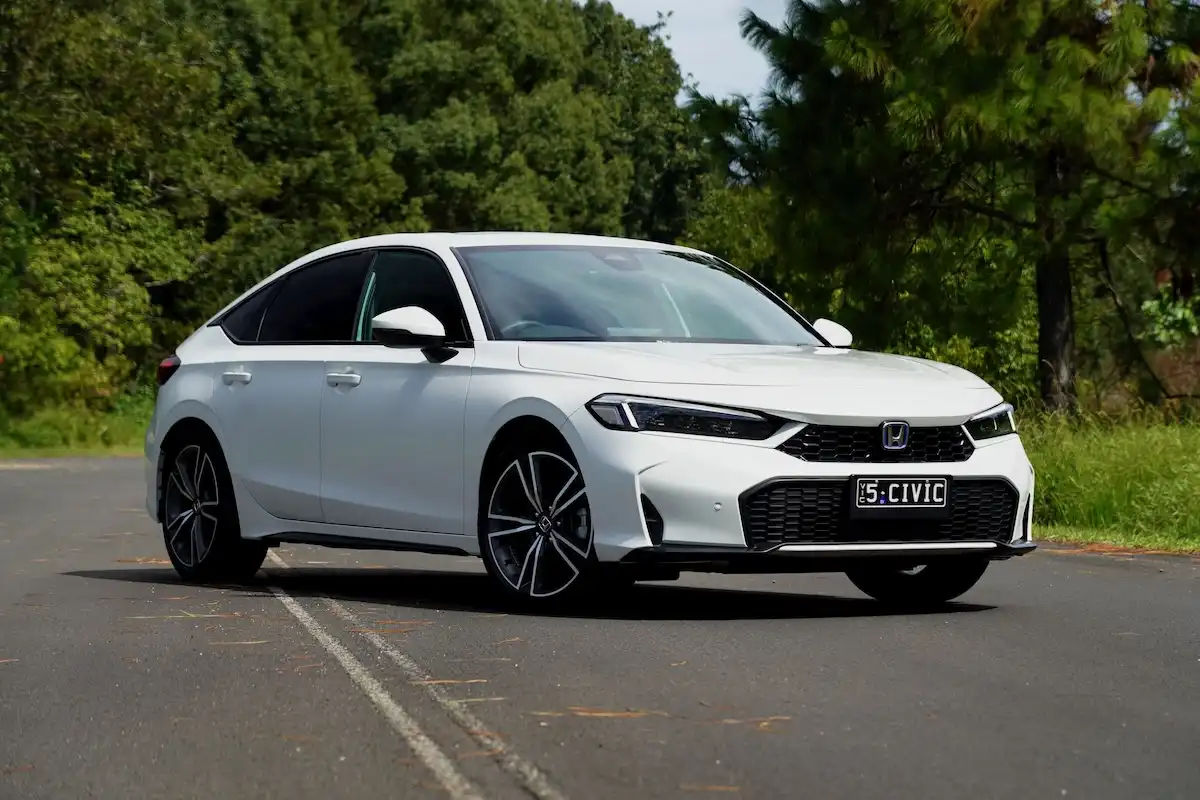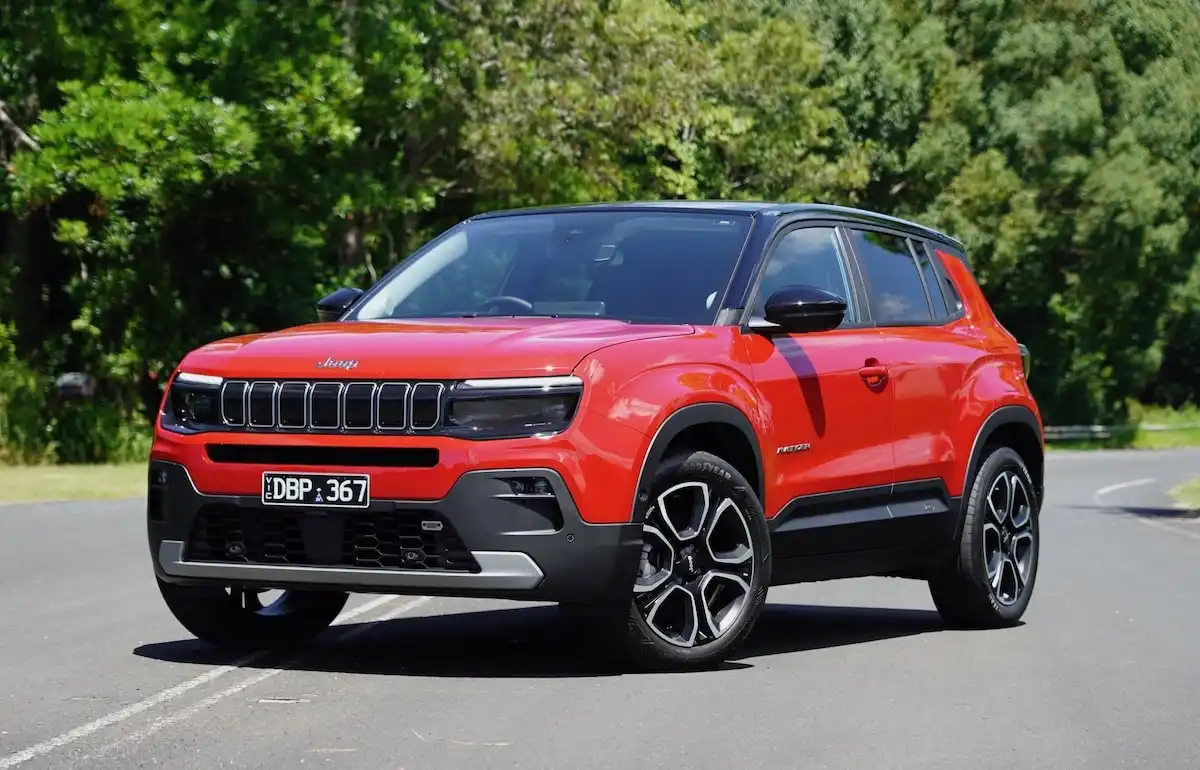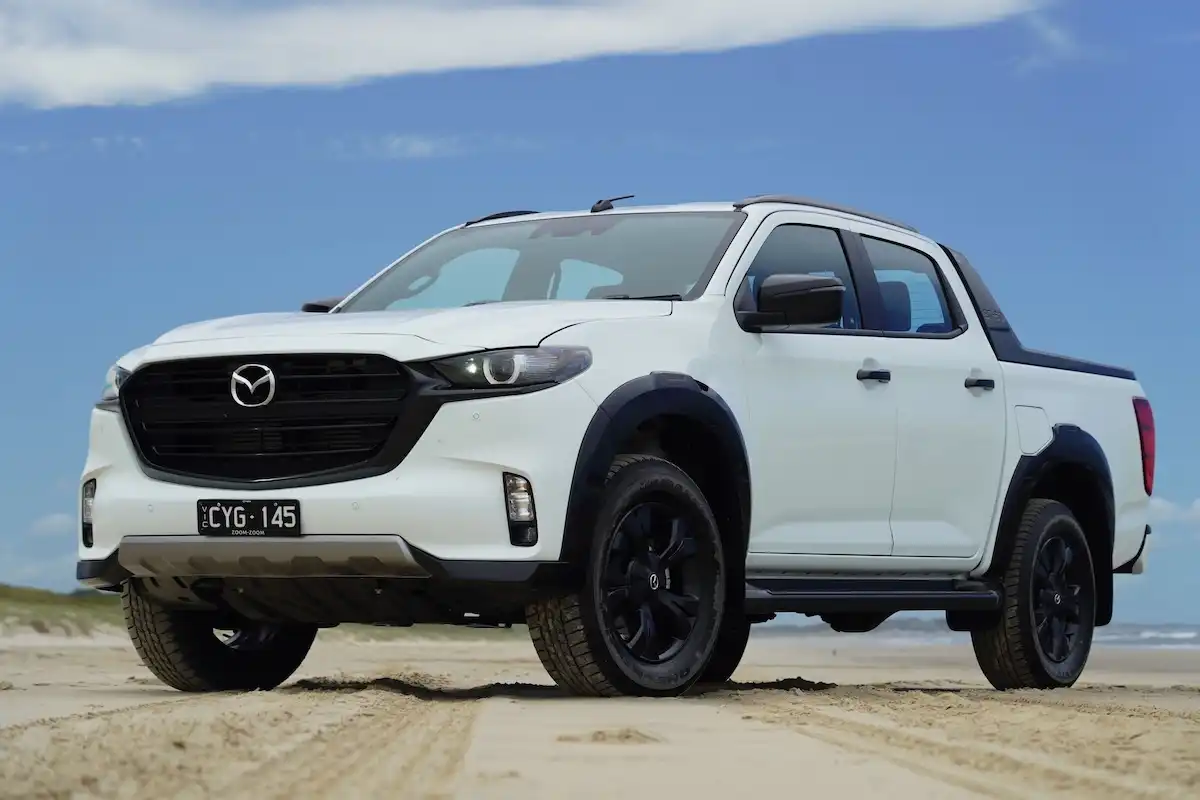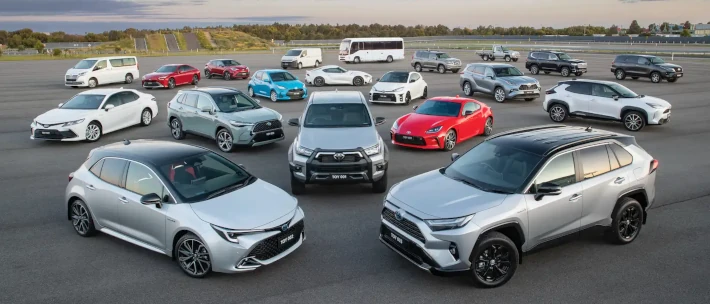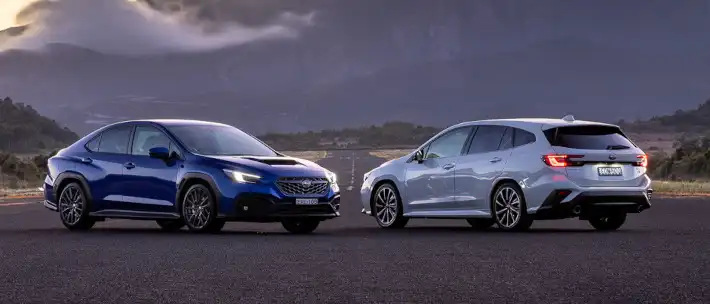Let’s find out whether or not there’s enough substance to match the C-HR’s styling, and see how well it serves the needs of Australians and growing families?
Starting Price: $30,915
OnlineAuto Savings: Enquire now
Toyota C-HR (ZYX10R) Specifications
| Model Date | 2022 |
| Make | TOYOTA |
| Model | C-HR |
| Series | ZYX10R |
| Variant | KOBA (2WD) TWO TONE HYBRID |
| Body | 4D WAGON |
| Fuel type | UNLEADED PETROL/ELECTRIC |
| Transmission | CONTINUOUS VARIABLE |
| Drive | FWD |
| Engine | MPFI |
| Engine capacity | 1798 |
| Engine configuration | VARIABLE DOUBLE OVERHEAD CAM / 16 valves |
| Engine RPM | 5200 / 4000 |
| Cylinders | 4 |
| Torque | 142 |
| KW | 72 |
| Fuel tank size | 43.0 |
| Fuel usage specs | 4.3 / 0.0 |
| CO2 | 97 |
| ANCAP security rating | 5 |
For more details and other variants, check Toyota C-HR car page.
Need help narrowing down your choices?
Get in touch with one of our Car Buying Specialists today
Request a quoteHow Much Does It Cost?
The Toyota C-HR range kicks off from $30,915 for the entry-level GXL 2WD, with prices raising to $32,915 for the GXL all-wheel drive variant. From here, the range moves to the Koba 2WD, which is priced at $35,165, rising to $37,165 for the all-wheel drive variant.
The range topping GR Sport Hybrid is priced at $37,665, while Koba Hybrid is priced at $37,665.
How Much Can OnlineAuto Save You?
Using OnlineAuto’s car buying service, you could save by sourcing one of our car specialists to help you find the best value model for you.
What Features Does the Toyota C-HR Have?
The entry-level C-HR GXL comes riding on a set of 17-inch alloy wheels, and receives LED headlights, fog lights and daytime running lamps, keyless entry, dual-zone climate control, a reversing camera with parking sensors, adaptive cruise control, automatic headlights and wipers, leatherette steering wheel, heated mirrors, a 8.0-inch infotainment system with Satellite navigation, Apple CarPlay and Android Auto, as well as a host of active safety technologies.
Moving to the GR Sport variant adds a set of 19-inch alloy wheels, revised LED headlights and exterior styling package with GR badging around the body, leather sport seats, interior updates, GR power steering, GR brake calipers, updated suspension and floor braces.
Opting for the C-HR Koba variant adds 18-inch alloy wheels, heated leather seats, a surround-view camera, rear privacy glass, illuminated door highlights, as well as rear cross-traffic autonomous emergency braking.
Range Features:
-
17-inch alloy wheels
-
LED headlights, fog lights & daytime running lamps
-
Keyless entry and start
-
Dual zone climate control
-
Adaptive cruise control
-
Leatherette steering wheel
-
Heated mirrors
-
Reversing camera
-
Parking sensors
-
8.0-inch infotainment system with sat-nav, Apple CarPlay & Android Auto
-
AEB braking with pedestrian and cyclist detection
-
Rear cross-traffic alerts
-
19-inch alloy wheels (GR Sport)
-
GR body styling (GR Sport)
-
Leather sport seats (GR Sport)
-
GR Sport steering (GR Sport)
-
GR Sport brake calipers, suspension and floor braces (GR Sport)
-
18-inch alloy wheels (Koba)
-
Leather seats (Koba)
-
Surround-view camera (Koba)
-
Rear cross-traffic autonomous braking (Koba)
Toyota C-HR Colours
| Yellow Hornet | Crystal Pearl |
| Shadow Platinum | Graphite |
| Nebula Blue | Feverish Red |
| Oxide Bronze |
Is it Comfortable to Drive?
One of the biggest compliments you can give a car is that it is completely effortless to drive, and in this respect, Toyota has created a winner with the C-HR range. It’s important to note, though, that there are two engines available across the range.
Entry-level variants receive a 1.2-litre turbocharged four-cylinder engine, with the option of a 1.8-litre hybrid powertrain for more premium variants, both of which put power to the ground via a CVT transmission, with both front and all-wheel drive platforms available.
In the entry-level models, the engine feels perky, in spite of its modest power figure, with a smooth delivery of power from the CVT automatic, which works in a way that you’ll barely notice. Overall, the C-HR is an absolute dream to drive around town thanks to its lightweight steering design and comfortable suspension platform that is perfect for urban driving.
The pick of the bunch, though, are undeniably Toyota’s hybrid variants, which offer more power and torque than the standard car, and provide a smooth, silent ride quality that makes the C-HR perhaps the perfect companion for trips around town.
Picking up speed off a set of traffic lights is significantly more responsive thanks to the added electric boost from the hybrid unit, while the driver also benefits from regenerative braking that captures energy lost while slowing down, feeding it back into the battery pack.
The C-HR makes driving extremely accessible, positioning the driver nice and high, while giving them a great view out of the front windscreen. Thanks to its compact proportions, the C-HR remains easy to park in tight spaces, and makes low-speed manoeuvres simple due to the impressive turning circle.
As a compact SUV designed primarily with the urban jungle in mind, the Toyota C-HR is an extremely captivating offering for the market, with perky performance in the hybrid variant in an extremely accessible and easy to drive package.
Is it Practical and Spacious?
The C-HR’s funky styling continues inside the cabin, with a fresh approach to interior designs that also contains some of the practical elements that Toyota has become famous for.
As a compact SUV, the C-HR is limited by its overall proportions, but there is more than enough space in the front of the cabin for even the tallest of drivers. Up front, there’s a set of comfortable seats and an adjustable steering column to find the perfect driving position, with a relatively straight-forward approach to cabin packaging, albeit with some funky design features.
In terms of practicality up front, you’ve got storage in the large door bins either side and inside the small folding armrest, joined by a pair of cup holders and a small storage tray behind the gear lever.
Moving to the rear of the cabin greets passengers with a handsome amount of legroom, however, the lack of headroom in the rear of the C-HR’s cabin is noticeable. While this won’t prove an issue for kids, any tall passengers or teenagers will be quick to point out the lack of headroom from that sloping roofline. Combined with the small rear windows, the C-HR can feel cramped after some time.
The rear cabin can accommodate three passengers, although the lack of shoulder width will prove uncomfortable on longer journeys. For parents, the C-HR is fitted with easily-accessible ISOFIX mounts for child seats, although some of the larger seats on the market will require you to move the front seat forward for a perfect fit.
In terms of cargo capacity, the C-HR has a boot rated at 318L, which is fairly compact for the segment, but is easy to pack thanks to the square design, and features seats that fold completely flat to accommodate larger items.
Is it Safe?
The Toyota C-HR has been awarded ANCAP’s maximum five star safety rating, scoring 87% for adult occupant protection, 77% for child protection, 65% for vulnerable road user protection and 68% for safety assistance technologies.
As standard, the C-HR range comes packaged with a host of active safety technologies, including autonomous emergency braking with pedestrian and cyclist detection, a reversing camera with parking sensors, blind spot monitoring, rear cross-traffic alerts, adaptive cruise control, lane departure warnings and a trailer sway control function.
The range-topping Koba variant receives a surround-view camera, rear cross-traffic AEB braking, lane trace assist and emergency steering assistance.
Is it Fuel Efficient?
With two engines available in the C-HR range, fuel economy depends largely on whether you’re opting for the standard, or hybrid variant. The front-wheel drive C-HR range is rated at 6.4L per 100km on a combined cycle, while the AWD variant is rated at 6.5L per 100km.
Opting for the C-HR Hybrid, however, drops this figure to just 4.3L per 100km, making it an extremely fuel efficient offering within the compact SUV market.
Our Verdict: Is the Toyota C-HR Worth it?
If you’re looking for a compact SUV that retains all the Toyota hallmarks of comfortable, easy driving with the benefit of some extremely funky styling, the C-HR may be the perfect car for you.
It remains one of the leading offerings within the compact SUV segment. It’s important to note, though, that it does not have a huge amount of space in the rear of the cabin, but that is something that applies to most, if not all cars in the segment.
Hybrid variants are no doubt the pick of the bunch, offering more engaging acceleration while significantly reducing overall fuel economy, but the entry-level variants remain extremely impressive vehicles.
If you haven’t already, ensure the C-HR has a spot on your shortlist for compact crossover SUVs. On that note, if you’re in the market for a new car, you can get a free quote and see how much OnlineAuto can save you on your next car, or call us on 1300 719 925
Five Specs You Need to Know
-
Five-year, unlimited KM warranty
-
12-month/15,000km service intervals
-
318L of boot storage
-
Fuel economy ranges from 4.3L/100km in hybrid - 6.5L/100km in base all-wheel drive variant
-
Five-star ANCAP safety rating
Pros
-
Extremely easy to drive in all situations
-
Impressive fuel economy; especially for hybrid variant
-
Competent and comfortable during town and highway driving
Cons
-
Lack of headroom in the rear cabin
-
Underwhelming infotainment system
-
No air vents or USBs in rear of cabin
Toyota C-HR Competition
Toyota C-HR |
VS |
Ford Puma |
| Honda H-RV | ||
| Mazda CX-3 | ||
| Hyundai Kona | ||
| Subaru XV |

